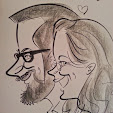We've all heard of the three act structure. But consider three as a structure in other compositions. In pop songs, you have a verse and a chorus, then a verse and a chorus, and then a bridge and a chorus. If you look at comics, they normally have three panels. Jokes almost always involve three steps to them: a straight line, a straight line, and a punch line. Three guys walk into a bar, and the third delivers the punchline. Volleyball, according to Mr. Hansen, is an athletic comedy--bump, set, spike.
Why all of these threes? The phrase that he used and has stuck with me the best is this: the Goldilocks Guide to Artillery. To find your cannon's range on a target, it usually takes three tries. The first is too hot, the second too cold, and the third is just right.

It's similar to home repair. There are three steps: first, go get what you need from Home Depot. Second, go back to Home Depot and get what you didn't know you needed. Third, go back to Home Depot and get what you actually need.
This three step pattern is everywhere. You try, fail, and learn something; so you try again, fail again, and learn something else; and then you try one final time and succeed.
But why are stories like this? Why can't there just be two act stories, or stories just about a single try/fail step?
It's because, in Mr. Hansen's words, three is the minimum narrative container for significance. (I don't know if that's true because it's in bold or if it's in bold because it's true.) But think about it. One action is simply a procedure. You're hungry, you make a sandwich and eat it. COOL STORY BRO! Two actions is a rule, meaning that it looks more like an if/then logic step than it does a story. The sandwich doesn't fill your hunger, so you get pizza, and you're good. Three actions is what we call a story, because that's about how we solve a problem when the obvious answers aren't going to be the ones that solve the problem.
It's how the most powerful, trying, and interesting ideas are explored. So that's why three is a magic number: it's the minimum narrative container for significance (I love how he put that).
And with that, I'm off to continue to celebrate my Threesday! What do you think about this idea--and does it make sense in the fiction you read and write?

4 comments:
Carl, this is also known as a Try Fail Cycle. You have your character do something, and fail at the objective. Pretty much your characters do this all the time in stories. And we have them frequently in real life too. They are what make stories have significance and also why they are realistic. Great post man!
Oh I nominated you for a Kreativ Blogger Award. Just thought you might like to know.
This is a great post and very informative! Thanks
You've been tagged to join the Great Star Wars Blogathon! Details here: http://www.troublewithroy.com/2012/03/so-you-say-youve-got-this-idea-on-how.html
Interesting, might have to start posting in three's instead of 10's on my blog. See if it keeps attention better :P.
Post a Comment